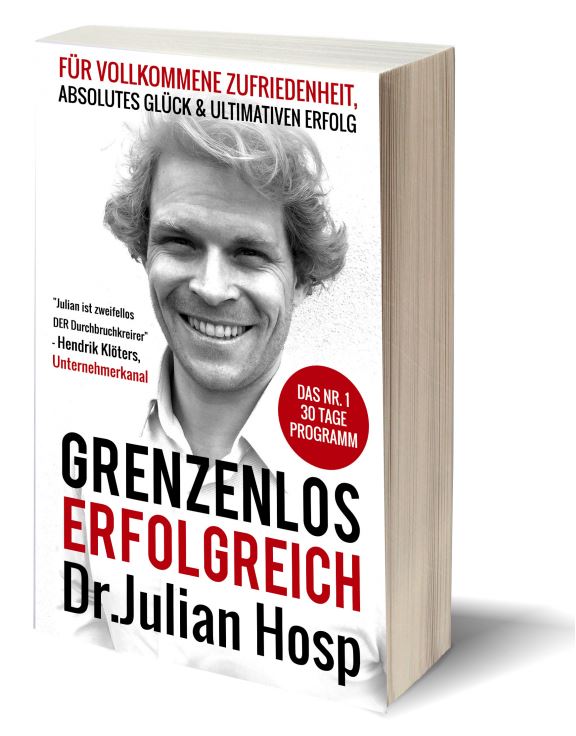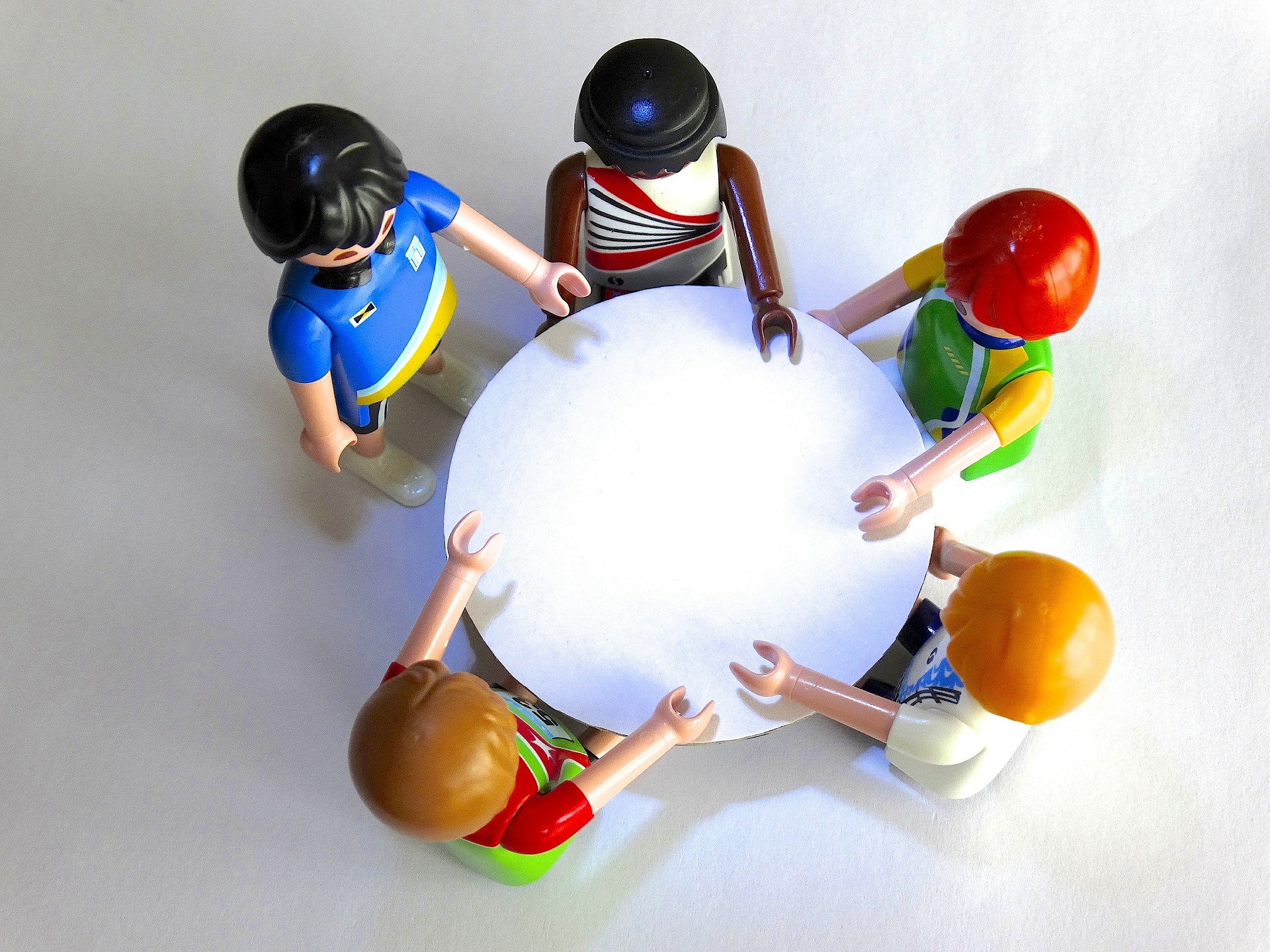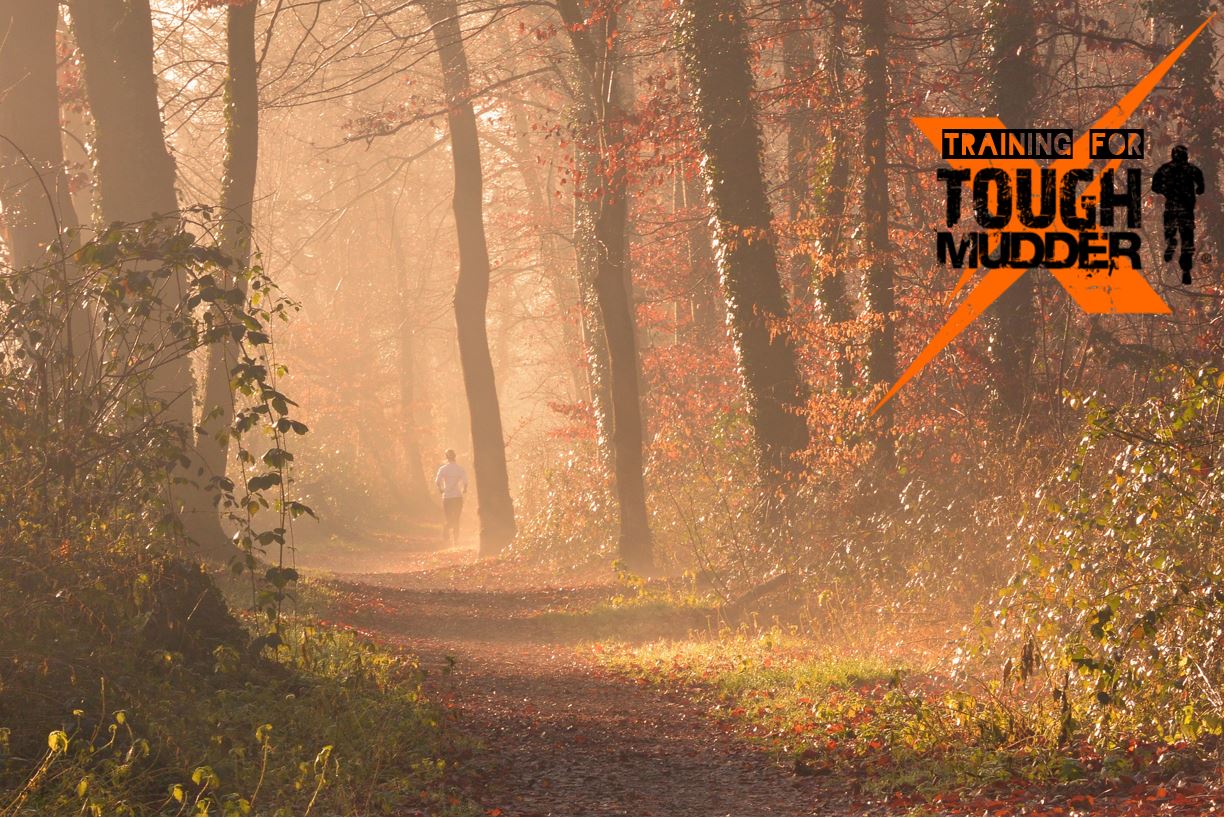Einleitung
Dieses Buch handelt von Erfolg und wie jeder es selbst definieren kann. Für den einen ist erfolgreich sein ein großes Haus am Strand besitzen, für den anderen bekannt zu sein und der nächste strebt nach innerem Glück und keinerlei materiellen Gütern als Erfolgsmesser.
Dieses Buch handelt von Erfolg und dem Weg ihn selbst zu finden und auch zu gehen. Wissen ist nur dann Macht, wenn es auch eingesetzt wird.
Im Folgenden werde ich meine ersten 7 Tage dieses 30 Tage Programms zusammenfassen, als Dokumentation für mein späteres ich.
Es beginnt damit Erfolg selbst zu definieren. Also setze ich mich eine halbe Minute hin und schreibe alles auf was mir dazu einfällt:
“Glücklich sein mit meinem Leben, von finanziellen Ketten gelöst. Machen wann ich möchte was ich möchte. Menschen helfen mit meinem tun. Zeit haben für die eigenen, wichtigen Dinge.”
Dem Auto Dr. Julian Hosp geht es darum, wie man nicht nur erfolgreich sein kann, sondern sich auch erfolgreich fühlt. Das Mindset, die Menschen um einen herum, die Ziele. All das ist wichtig.
Nach den in den Medien verbreiteten Bildern sind alle Filmstars und Rockstars erfolgreich. Jedoch kennen wir alle die Suizid Meldungen bekannter Schauspieler – so glücklich waren sie somit also nicht. Es geht darum, seinen eigenen erfolgreichen Weg zu finden.
Die Universumstheorien
Er beschreibt in diesem Zusammenhang in wenigen Seiten das Mitleidsuniversum. Dieses ist neben dem Mitgefühlsuniversum aufgebaut und hat keinen Deckel im Vergleich zum Ersten, weil aus diesem keiner entkommen kann. Durch Erfolge werden höhere Ebenen im Universum erreicht. Nun gibt es zwei Wege wie es weiter gehen kann bei einem Rückschlag:
Das Mitleid zieht uns nach unten und hält uns dort. “Du tust mir so Leid, dass XY passiert ist.” Es bestärkt uns darin, keine weiteren Fehler mehr zu begehen und es gar nicht weiter zu versuchen, es hat doch sowieso keinen Sinn, es ist nicht schaffbar.
Das Mitgefühl hingegen baut einen wieder auf und startet das nächste Projekt. “Versuch es doch das nächste Mal mit XY.” Der andere fühlt mit, ohne aber zu leiden und dadurch kann er rationales Feedback geben. Sie unterstützen ihn rational! Mitleid bringt nicht wirklich was, Mitgefühl und dadurch Bestärkung hingegen schon.
Durch das Mitgefühl können immer höhere Ebenen erreicht werden und schlussendlich das Universum verlassen werden, wenn der Deckel nicht wäre. Bei Mitleid wird man nie auch nur in die Nähe des Ausgangs kommen, die Anderen halten einen unten. Daher ist auch kein Deckel notwendig.
Die Vogel Theorie
Stellen wir uns nun 10 Vögel auf einem Dach vor. Einer der Vögel hat jedes einzelne Buch übers Fliegen gelesen, kennt jeden Trick und kann es ohne Probleme erklären. Jedoch ist er selbst noch nie geflogen. Wie viele Vögel sitzen nun noch auf dem Dach?
Alle, weil keiner los fliegt. Sie reden nur drüber wie schön es ist oder wäre. Setzen es aber nicht um. Die Angst ist zu groß. Wissen ist potentielle Macht. Tun ist Macht.
Einige wichtige Denkanstöße
- Lernen statt kopieren: Verstehe was du liest oder lernst. Zu sagen man habe zehn Bücher über ein Thema gelesen ist noch lange kein Beweis für das Verständnis der Inhalte. Die Feynman technique hat mir im Studium hierbei sehr geholfen.
- Anfang und Ende definieren: Das große Ende und die ersten Schritte sind wichtig. Was gibt es zu tun, wo fange ich an und wo möchte ich hin. Der Pilot muss das Starten und Landen perfekt beherrschen und die grobe Richtung auf der Landkarte kennen. Wenn ein Windzug von links oder von rechts bläst, wird er trotzdem wissen was zu tun ist und heil ankommen. Er verschwendet nicht seine Zeit damit, die genauen Lenkungen auswendig zu lernen, er handelt intuitiv.
Anfang und Ende sind wichtig – das dazwischen ergibt sich.
- Resultat und Potential: der Unterschied zwischen deinem Resultat und deinem Potential ist das tun. Wer nicht beginnt kann das größte Potential der Welt haben und doch nichts liefern.
- Jeder will erfolgreich sein nur die Arbeit wollen die wenigsten leisten, die es dafür braucht.
Die fünf warum Fragen
Im nächsten Schritt wurde der Leser dazu aufgefordert, seine Definition von Anfang zu nehmen und fünf mal in Folge das Statement mit einem warum weiterzudenken. Wenn man an einer Stelle nicht weiter weiß, muss trotzdem weiter gedacht werden.
Meine Session
Laut Hosp ist die Lösung entweder Glücklich oder Zufrieden sein. Oder beides. Aber nur wenn es wirklich so ist und es nicht nur gesagt wird ohne es wirklich zu fühlen. Viele sagen sie sind zufrieden, sind es aber nicht wirklich. Sie sind nicht wirklich vollkommen zufrieden. Es ist immer noch was drinnen, das raus möchte. Das Ende des warum ist das Symbol für diese Gefühle. Wenn wir dieses Symbol erreichen, dann fühlen wir uns leer, weil es kein Ziel mehr gibt. Darum sollten Ziele hoch gesteckt sein, um sich lange an dem Weg dahin zu erfreuen.
Erfolg ist daher wer wir werden, nicht was wir bekommen.
Wir sind erfolgreich wenn wir glücklich und zufrieden sind, aber immer noch ein bisschen mehr wollen. Einen kleinen Hunger spüren. Das hier noch lernen oder hier noch ein wenig mehr. Kein Stillstand.
Erfolg ist 80% wollen und 20% Strategie. Julian hat hierfür seine eigene kleine Bedürfnispyramide erstellt. Es wird unten begonnen und wenn alle Felder einer Ebene abgearbeitet sind, kann eine Stufe nach oben gegangen werden.
Bedürfnispyramide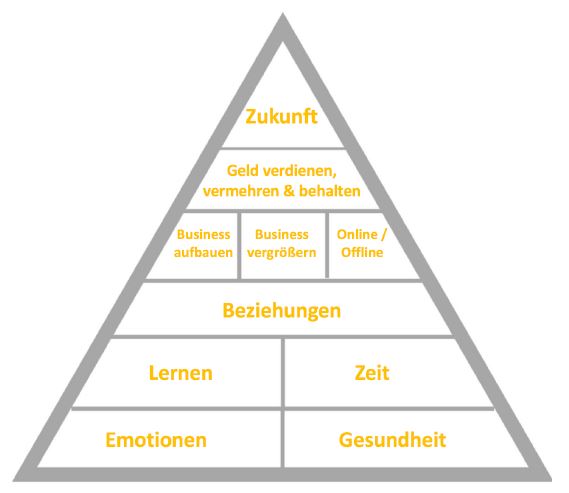
Am Ende jedes Kapitels gibt es eine kleine Hausaufgabe, mit deren Erfüllung die Persönlichkeit wachsen soll. Meine ToDos sind unter dem Link gespeichert – für mich.
To-Do’s:
1. Was bedeutet absolutes Glück und vollkommene Zufriedenheit in deinem Leben?
2. Warum hast du dir dieses Buch für grenzenlosen Erfolg gekauft?
3. Welche Resultate möchtest du erreichen? Wem möchtest du etwas beweisen?
4. Welche großen Ziele hast du? Welche Wünsche möchtest du dir erfüllen?
5. Welche Schwierigkeiten möchtest du überwinden bzw. welche Ängste loswerden?
6. Wer möchtest du in diesen 30 Tagen werden? Zu welcher Persönlichkeit willst du
aufsteigen? Wie sollen andere Menschen über dich denken?
7. Wer ist ein Mensch, der deiner Meinung nach die Definition von Erfolg zu 100% erfüllt?
Und zwar nicht nur dem Anschein nach außen hin, sondern vollkommen.
Alle ToDos gesammelt
Die vier Motivationen des Menschen
- Gewohnheit: In annähernd jedem Buch das ich bisher über Gewohnheiten gelesen habe, kommt das McDonalds Beispiel vor. Sie produziert den besten durchschnittlichen Burger der Welt. Das ist deren Geheimnis. Wir wissen genau was uns in diesem Restaurant erwartet, es ist nicht der beste Burger der Welt, jedoch gehen wir auch kein Risiko etwas schlechtes zu essen. Wir mögen die Gewissheit wie beispielsweise ein Gehalt am Ende vom Monat statt schwankendes Einkommen in der Selbstständigkeit.
- Abwechslung: Ist etwas Konträr zum Ersten. Wir mögen es einen festen Job zu haben, aber keinen, der monoton ist. Lieblingsessen ist es so lange, bis wir es jeden Tag essen müssen. Wir erweitern gerne in kleinem Umfang unsere Komfortzone.
- Besonders sein: Soziales Grundbedürfnis um sich mit anderen zu vergleichen und besser zu sein. Im Sport, Instagramm Likes, beim Gehalt. Steht im Kontrast zum nächsten Punkt.
- Liebe & Zuneigung: Wir wollen in der Gruppe akzeptiert werden. Dieses Bedürfnis ist stark verankert, da unsere Vorfahren ohne den Schutz der Gruppe sehr schnell entweder verhungert oder gefressen wurden.
Konträr zueinander stehen 1+2 und 3+4. Zwei von diesen vier stechen in jedem von uns heraus. Meine sind eins und vier. Ich mag geregelte gewohnte Dinge und bin ein gefühlvoller Mensch. Diese vier Punkte bilden die nächsten Schritte über den Grundbedürfnissen wie Essen, Trinken und Schlafen. Sind diese erfolgreich erreicht, können die Steps darüber in Angriff genommen werden, um schlussendlich Teil von etwas größerem sein. Zum Beispiel eine Firma gründen die die Welt verändert. Ein höherer Sinn.
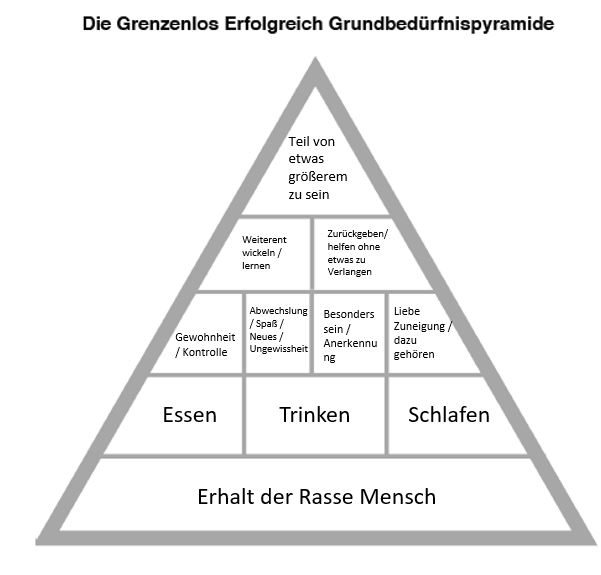
Abschluss
Erfolg ohne sich erfolgreich zu fühlen ist der absolute Misserfolg.
Es kann sich erfolgreich gefühlt werden, wenn die Pyramide der Grundbedürfnisse erfolgreich erklommen ist. Erfolgreich sein wird über das erklimmen der Bedürfnispyramide erreicht.



